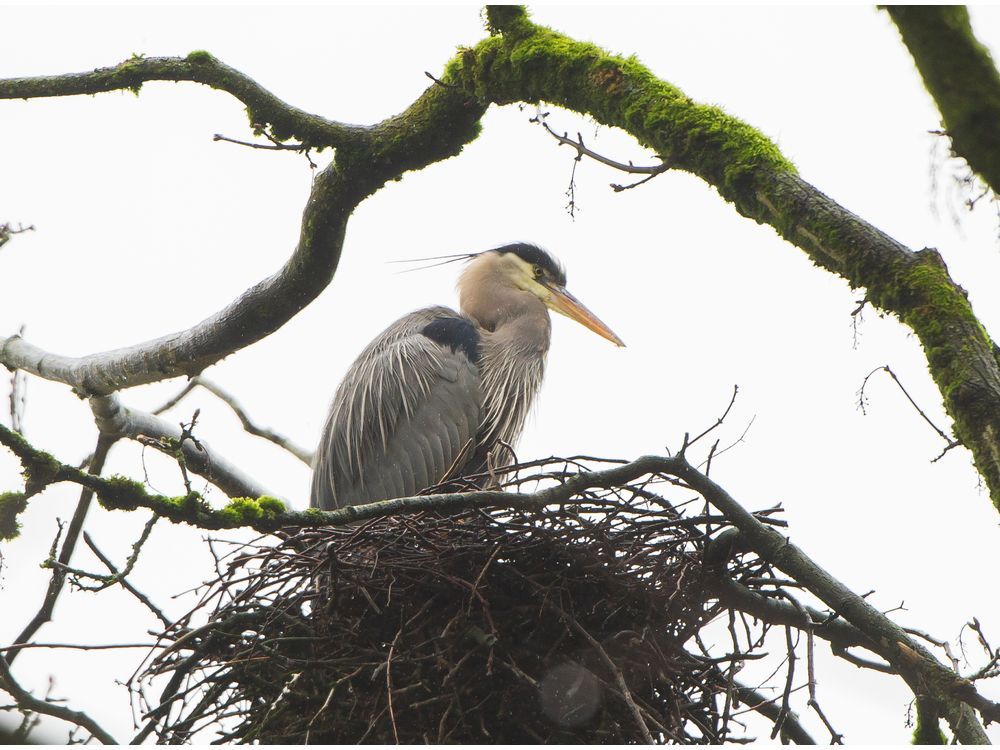Squawk! Pacific great blue herons return to Stanley Park, other colonies of concern

Credit to Author: Kevin Griffin| Date: Tue, 03 Mar 2020 01:17:33 +0000
A drop in the number of nests of Pacific great blue herons in Stanley Park doesn’t indicate the colony will be moving anytime soon, a federal biologist said Monday.
Ross Vennesland, senior species at risk biologist for Environment and Climate Change Canada, said what’s of greater concern is what may be a decline in the number of nests in the medium-size colonies in Metro Vancouver.
Pacific great blue herons returned to Stanley Park on Feb. 21, says Vancouver park board.
Vennesland said his data shows that the colony by the Vancouver park board office on Beach Avenue by highrise towers in the West End started in 2001 with 14 nests, followed in subsequent years with 18, 62, and 159, reaching a height of 178 nests in 2006.
Last year, the park board estimated there were 82 nests, three fewer than in 2018. This year, the herons began returning Feb. 21, the board said.
“Just because a colony goes up to a maximum and comes down doesn’t mean it’s destined for abandonment,” said Vennesland,
Smaller colonies with 25 or so nests tend to relocate more often than larger ones, he said.
“The big ones tend to stay for decades. It could be there for another 20 years.”
In Stanley Park, the park board Heron Cam is now live streaming various views of the nests until the ending of the breeding season in August.
According to The Cornell Lab of Ornithology, great blue herons are most vocal on breeding grounds when they arrive at a nest and start a “rapid frawnk squawk (that) can last up to 20 seconds.”
The largest Pacific great blue heron colony in Metro Vancouver is in Tsawwassen near the ferry spit, where a rookery of 350 to 450 nests is located. It represents 12 per cent of the country’s population of the subspecies, Vennesland said.
He said the concern is with changes that have taken place at four medium-size colonies in Metro Vancouver: one at Mary Hill Bypass near the Port Mann that moved to Deer Lake; one at University of B.C. in Pacific Spirit Park that moved to Stanley Park, one in the Chilliwack Nature Reserve that has remained in the same location, and one on the Alouette River in Haney that has been abandoned.
In the late 1990s, all four colonies increased in size to about 200 nests. Since then, the number of nests in all the colonies has decreased.
“It appears either the population has gone down, or might be dispersing into smaller colonies due to eagle predation,” he said. “That’s a bit of where that worry comes from. These colonies have gotten smaller for some reason.”
Vennesland said Pacific great blue herons are one of the bird species with “high public appeal.”
“It’s an indicator species,” he said. “It’s one of these species that exists at the top of the food chain and is susceptible to pollutants and changes in food supply. It represents an indicator of ecosystem health.”
Herons were first documented breeding in Stanley Park at Brockton Point in 1921.
Pacific great blue herons are considered a species of “special concern” based on a status report written by Vennesland and Rob Butler in 2008 for Committee on the Status of Endangered Wildlife in Canada. It estimated there were up to 5,000 nesting adults in the country at that time.
CLICK HERE to report a typo.
Is there more to this story? We’d like to hear from you about this or any other stories you think we should know about. Email vantips@postmedia.com